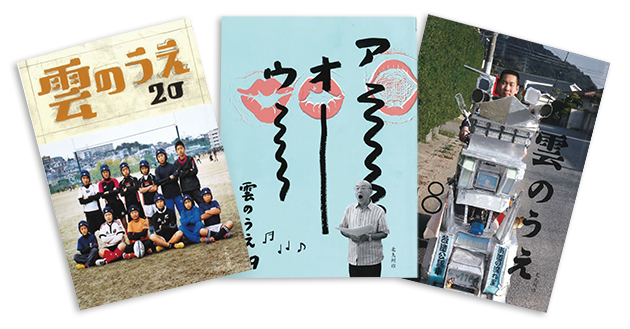Japan-based writer and traveller, specialising in design, lifestyle and travel journalism. Ron previously served as an editor of MING Magazine, ELLE Decoration and CREAM.
I have a very good impression of Shikoku. Every time I talk to my friend about it, first of all, we start with art gallery in the island of Seto inland sea. Then it comes to the story that I missed the last bus, I was about to walk for 30 minutes to the dock. On the dark road, suddenly a car stopped, a 60-year-old grandmother offered to drive me to the dock. My friend and I also talk about the delicious Sanuki udon. And once, before the Isamu Noguchi Garden Museum, a local couple showed me the way to an udon noodles shop which looks like a warehouse. They taught us how to cook noodles and put soup and hot spring eggs in the noodles. During the short lunch time, I cannot speak Japanese fluently and they cannot speak English fluently, but we happily talked with each other. When I think back, during the journey, the thing that stays the longest in my heart is the relationship with the local people.
Tatsuya Ariyama, an art supervisor, was invited by the tourism board of Kitakyushu to produce the free tourism magazine Above the Clouds (in Japanese: 雲のうえ). Although this magazine is rich in content, it is all about the human relationship.
Tatsuya Ariyama is also the art director of Ku:nel before the revision of the magazine. The pictures in it have no personal opinions, and the design is simple. Although the layout is usually filled tightly, there is no sense of pressure. When looking through it, the reader seems to feel the warmth of the pictures and the breath of the words. If you also like Japanese life magazine, you may be impressed by Ku:nel. Afterwards, the editor of Ku:nel, Kinue Okado, and the writer Masashi Matsuie started a magazine Tsuru and Hana (translation: crane and flower). Tsuru and Hana, dedicated to asking questions to the elderly in life, mainly tells the stories about the elderly. In a gentle and moderate way, Tatsuya Ariyama brings out the warm content style of the magazine. Speaking of which, it’s not hard to imagine that a tourism magazine produced by Tatsuya Ariyama would definitely be able to break through the restrictions of official publications and not just fill the tourism information in it.

Above the Clouds, produced by the tourism board of Kitakyushu in 2006, has now been published to the 30th issue. Each issue has a specific theme. In the first issue, the theme is Izakaya, followed by the canteen, udon, festival and other attractive themes for tourists who plan to visit Kitakyushu. In addition, it also has interest group, “a citizen’s story”, an industrial school in an industrial city and other themes, which seems to have nothing to do with sightseeing. The main reason for these arrangements is that the tourism board of Kitakyushu not only wants tourists to know Kitakyushu through the magazine, but also wants residents to feel the local charm. On the other hand, Kitakyushu is a major industrial city in Japan, and many outsiders strangely think it is “a dangerous place to be”. Above the Clouds regarded as a window to speak up to the outsiders. It has an assignment to attract migrants to settle in order to alleviate its severe problem of ageing population.
The creative team of Above the Clouds , besides Tatsuya Ariyama, also has other members, like Isao Masano, a painter who was born in Kitakyushu, and Momoko Tsuruya, a famous copywriter. And it is the credit of the citizens in Kitakyushu that can successfully produce such a solid magazine—every time the members decide on a topic, they post it on the official website and receive a flood of information from the citizens and their suggestions about interviewees. For the materials selection, they have their own unique tastes. They do not love fashion beautiful shops and scenic spots. In their opinions, the common people in the small scenery, is the most charming thing in a city. In each issue, Isao Masano would add some beautiful illustrations for Above the Clouds. With free and unrestrained brushwork, without too much modification, to convey the small scenery concretely, is the indispensable ornament in this magazine.
In terms of articles, I was particularly impressed by the introduction article of the 22nd issue, which the theme is udon. This article does not talk about some popular udon noodle shops with long lines, but the story of KOTOHIRAYA noodle shop. KOTOHIRAYA is an old noodle shop serving primary and secondary schools in Kitakyushu. The udon made by them is the closest noodles to the citizens. The story in the introduction is not about their delicious products, or the founder’s struggle history, but about when the current owner’s father died, how his mother, a woman by her own hands, managed dozens of employees and took care of their meals and her unfinished wish. Like other interviews in the magazine, it reveals the stories of the people in Kitakyushu, small but profound and moving, where the essence of a city lies.
Above the Clouds is free in distribution at stores throughout Japan. If you are interested, you can find a list of distribution sites on their website (www.lets-city.jp/03_kumonoue-list.php).